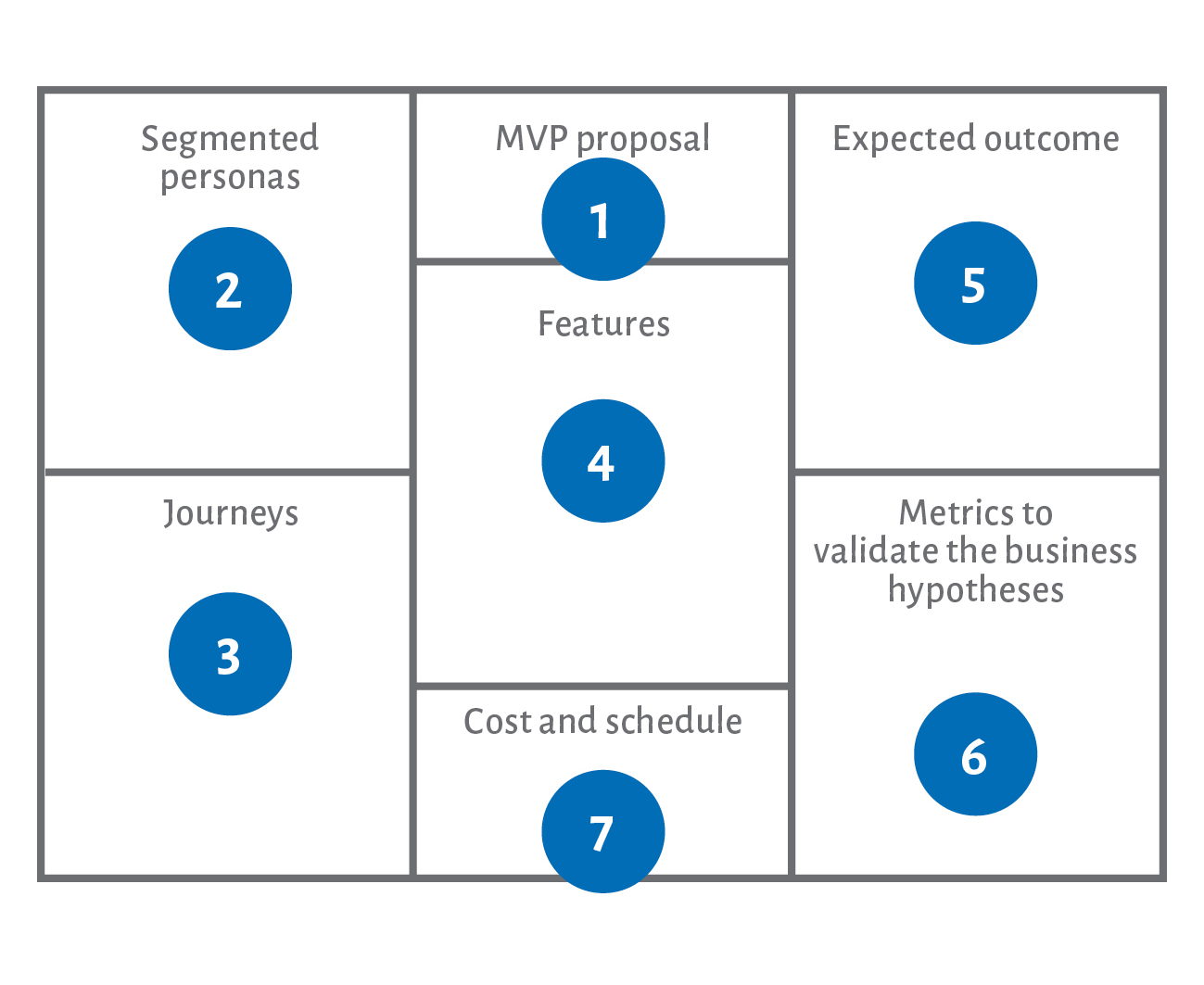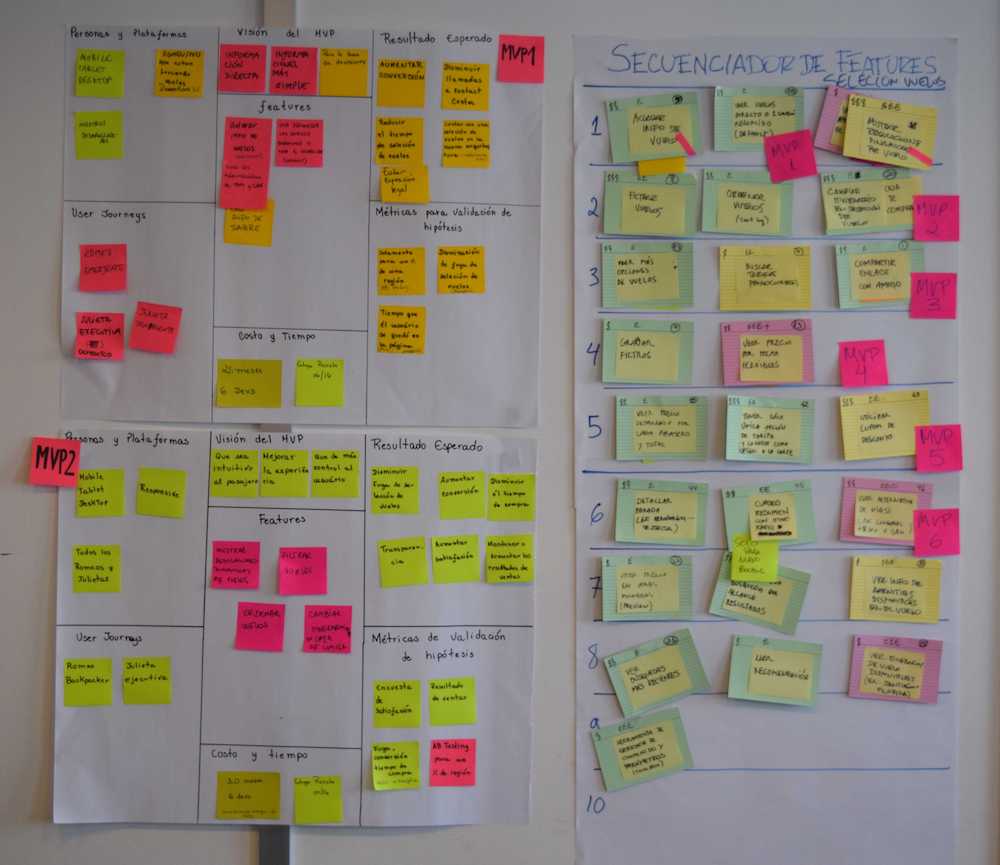Build the MVP Canvas
22 February 2022
This page is part of The Lean Inception article series
Now we’ve gone through all the earlier activities, we have all the knowledge we need to build the final artifact - the MVP canvas. We build a canvas for the MVP that we defined in Sequence the Features.
We follow the principle of user-centered design. In building the MVP we should consider the users and their journeys. We should work on the actions that improve or simplify their lives. But that is not all. We must also explore the business case by developing a hypothesis that we can test with the MVP. This will help us understand if we are really moving forward, if we are really reaching the desired results or learning. The canvas connects the MVP features with the business hypothesis.

How we do it
We populate the MVP canvas answering a few questions. The results and discussions from our previous work come in handy:
- MVP Ptoposal: In Write the Product Vision we agreed upon the overall product vision, but here we state the specific proposal for this MVP. What are we trying to learn? What is the proposal for this MVP?
- Segmented Personas: In Describe the Personas, we identified personas for the whole product. For the MVP canvas, we identify the smaller set of personas that we are focusing on with this iteration. Who is this MVP for? Can we segment and test this MVP in a smaller group? (Example: Soccer Dude and Work Buddy on android only for a small neightborhood)
- Journeys: We look again at the results of Show the User Journeys and then Display Features in Journeys. For this iteration we state which users´ journeys will be improved by this MVP. (Example: “Soccer Dude: invite friends for a match” and “Work buddy: accepts invites for a match”)
- Features: In Sequence the Features we figured out the features for the MVP. It is a good list, let´s copy it here. But is it complete? What are we building in this MVP? Which actions are going to be simplified or improved in this MVP? After having filled up the other MVP canvas building blocks, we review the list, add any features that are missing and simplify them to the minimum viable.
- Expected result: What learning or result we are seeking in this MVP?
- Metrics for business hypothesis validation: How do you know when to pivot and when to persevere? What would determine the success or failure? What data should we collect?
- Cost & Schedule: By looking at the features we have to build for this MVP, what is the cost and schedule? When can we look at the data for validating it? Is there any schedule constraint?

A sample result from a lean inception: MVP canvases for MVP and the next product increment on the left, a Features Sequencer on the right
| morning | afternoon | |
|---|---|---|
| Monday | Introduce the inception, kick off, and Write the Product Vision | The product Is – Is not – Does – Does not |
| Tuesday | Describe the Personas | Discover the Features |
| Wednesday | Technical, User eXperience and Business Review | Show the User Journeys |
| Thursday | Display Features in Journeys | Sequence the Features |
| Friday | Build the MVP Canvas | Showcase the results of the inception to those interested in the project |
This page is an activity of The Lean Inception, for an overview go to the main page.
For more details on how to run a workshop, consult the book.

